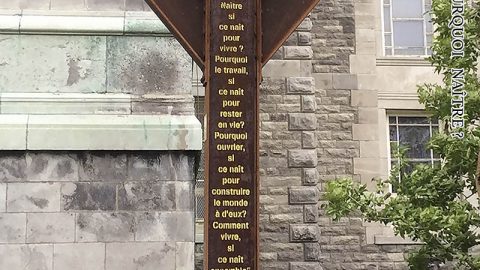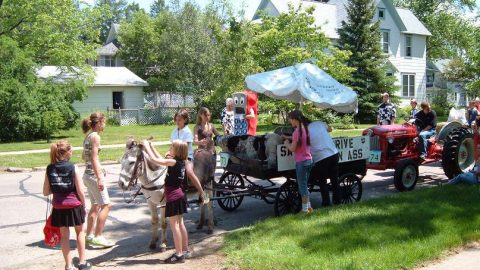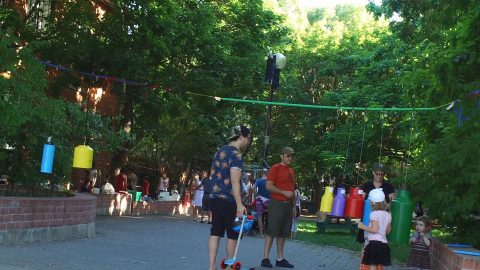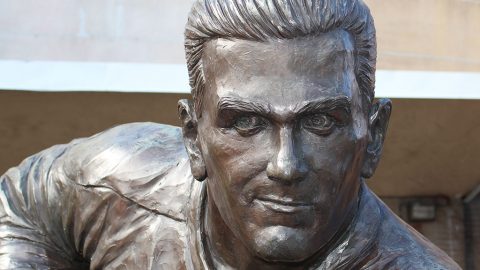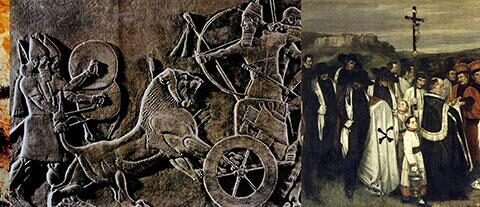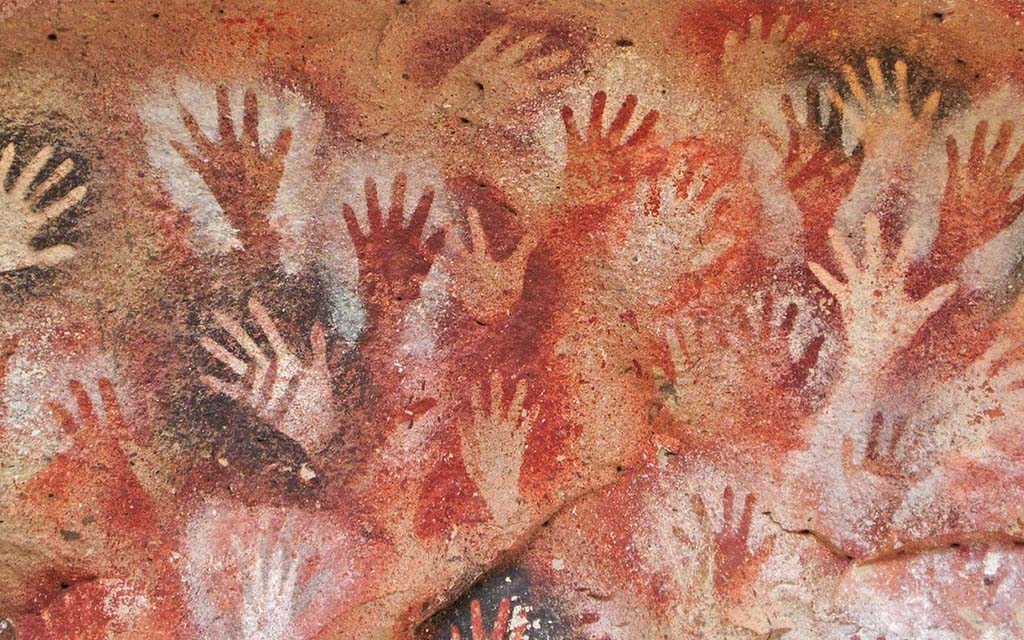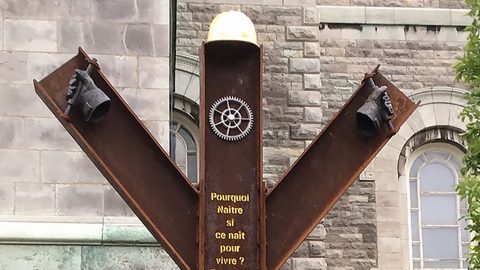English version follows below.
L’artiste, en tant que créateur de culture, revêt le rôle d’un explorateur inlassable de l’âme humaine, en quête de sens, de conscience et d’expression. À travers ses œuvres, il forge un univers où l’esthétique dépasse les simples formes pour plonger dans les profondeurs de l’expérience humaine. Sans le langage symbolique que les artistes offrent à travers leur travail, l’humanité se verrait contrainte d’improviser ses propres codes culturels, tel un orchestre privé de partition, guidé uniquement par le hasard et l’improvisation.
Le 2 juin 2018, une date marquante dans mon parcours artistique, j’ai eu l’honneur d’inaugurer une œuvre monumentale en présence de M. Pierre Lessard-Blais, maire de l’arrondissement Mercier, Hochelaga-Maisonneuve, de Mesdames Carole Poirier et Marjolaine Boutin-Sweet, respectivement députée provinciale et fédérale, ainsi que de M. Antoine Chagnon, président de l’entreprise Lallemand. Cette œuvre, baptisée Triptyque du Centenaire Lallemand 1915-2015, occupe désormais une place symbolique au bout de l’allée centrale du parc rénové Sarah-Maxwell, dans le quartier Hochelaga. Ce projet ambitieux rend hommage aux ouvriers de l’usine Lallemand, présente rue Préfontaine depuis plus d’un siècle.
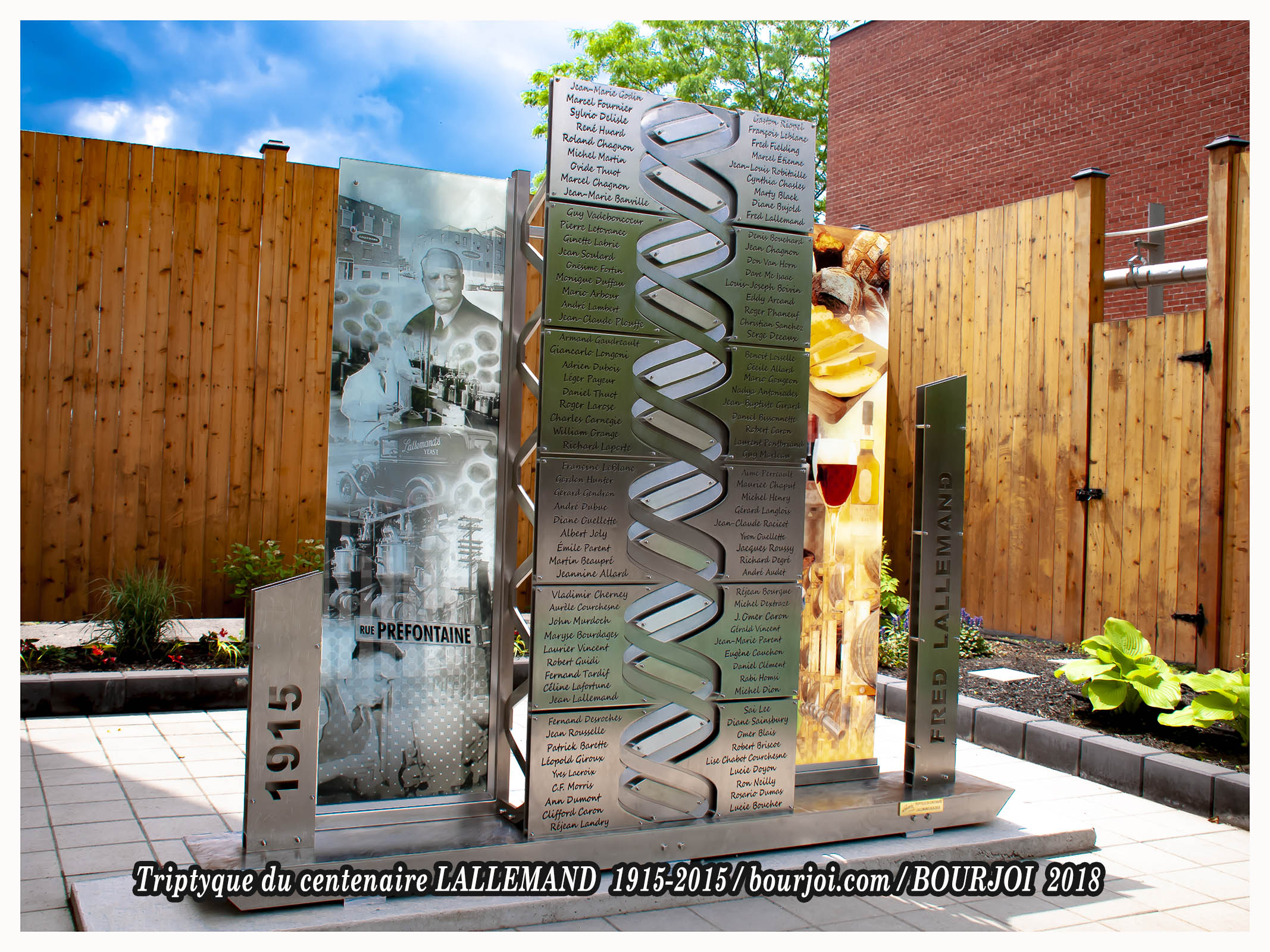
Fondée en 1915, cette usine se dresse comme un témoin de notre histoire industrielle et sociale, un phare de mémoire ayant traversé le temps et les transformations, tout en demeurant fidèle à ses racines.
Située à proximité de mon atelier, cette usine a su évoluer tout en s’adaptant aux réalités contemporaines. Elle a été rénovée et agrandie à maintes reprises, tout en préservant une continuité historique qui incarne les mutations sociales et économiques de chaque nouvelle époque.
Dans son livre L’Esthétisation du monde : vivre à l’âge du capitalisme artiste, Gilles Lipovetsky explore comment certaines entreprises modernes se sont engagées dans une production esthétique, fusionnant art et design pour sublimer l’expérience humaine et injecter de la beauté dans un monde souvent dominé par la rationalité économique.
L’usine Lallemand s’inscrit parfaitement dans cette tendance. En 2015, pour célébrer son centenaire, elle a ouvert ses portes au public, dévoilant les coulisses de sa production de levures alimentaires, principalement destinées à l’industrie boulangère.
En tant qu’artiste issu du quartier Hochelaga, cette commande publique m’a permis de remettre en cause l’adage selon lequel nul n’est prophète en son pays. Malgré les préjugés souvent associés à Hochelaga, l’usine Lallemand, solidement ancrée dans ce quartier, m’a offert sa confiance sans exiger de détails préalables sur la nature de l’œuvre que je proposerais.
Cela témoigne non seulement de leur profond attachement à l’histoire locale, mais aussi de leur respect pour la communauté environnante, véritable force motrice de l’usine.
Créer une sculpture publique monumentale est un défi singulier pour tout artiste. Il ne s’agit pas seulement d’un exercice de création, mais d’un processus complexe impliquant des considérations esthétiques, techniques et symboliques.
L’œuvre est destinée à traverser le temps, à résister au jugement des générations futures, et à incarner un dialogue entre l’artiste et la communauté. Ce type de projet exige que l’artiste sorte de son univers personnel pour embrasser celui de la collectivité, tout en étant à l’écoute des multiples strates de significations qui se superposent.
Pour ce projet, j’ai cherché à fusionner l’art, la science et l’histoire, à concevoir une œuvre qui résonne dans le présent tout en rendant hommage au passé. J’ai fait preuve d’une grande réceptivité aux influences du lieu et des personnes, traduisant ainsi, avec sensibilité, l’esprit de l’usine et des travailleurs, tout en évoquant les générations précédentes.
Le concept central de l’œuvre m’est apparu lorsque j’ai compris que, malgré son expansion internationale, l’entreprise Lallemand demeurait profondément enracinée dans ses valeurs québécoises.
Cette fidélité aux racines familiales m’a inspiré l’idée de relier symboliquement la famille dirigeante de l’entreprise à la grande famille des travailleurs qui ont contribué à la réputation de l’usine. Ainsi, l’idée de graver les noms de 100 employés, chacun représentant une année d’existence de l’usine, a pris forme naturellement. Cependant, la direction a souhaité aller plus loin, en inscrivant plutôt les noms de tous les travailleurs ayant œuvré plus de 25 ans dans l’entreprise, témoignant ainsi d’une reconnaissance véritable envers leur contribution.
Il y a environ 3000 ans, l’écriture a été inventée pour comptabiliser le bétail. Au fil du temps, ce décompte est devenu récit, et à travers l’écriture, les récits sont devenus des histoires. Nous avons ainsi appris à nommer le monde et à raconter nos vies. Pourtant, aucun mot ne porte autant de sens, d’histoire et de poids qu’un nom propre, le nom d’une personne incarne une vie, un héritage, un vécu d’une grande richesse humaine.
Pour cette œuvre, il ne pouvait y avoir de plus grande source d’inspiration que l’inscription des 105 noms propres que je souligne avec bonheur par le sous-titre de l’œuvre de 105 pour 100 (105%).
Cette liste incarne l’hommage aux travailleurs de Lallemand, une constellation de noms découpés dans l’acier, représentant non seulement des individus, mais toute une communauté.
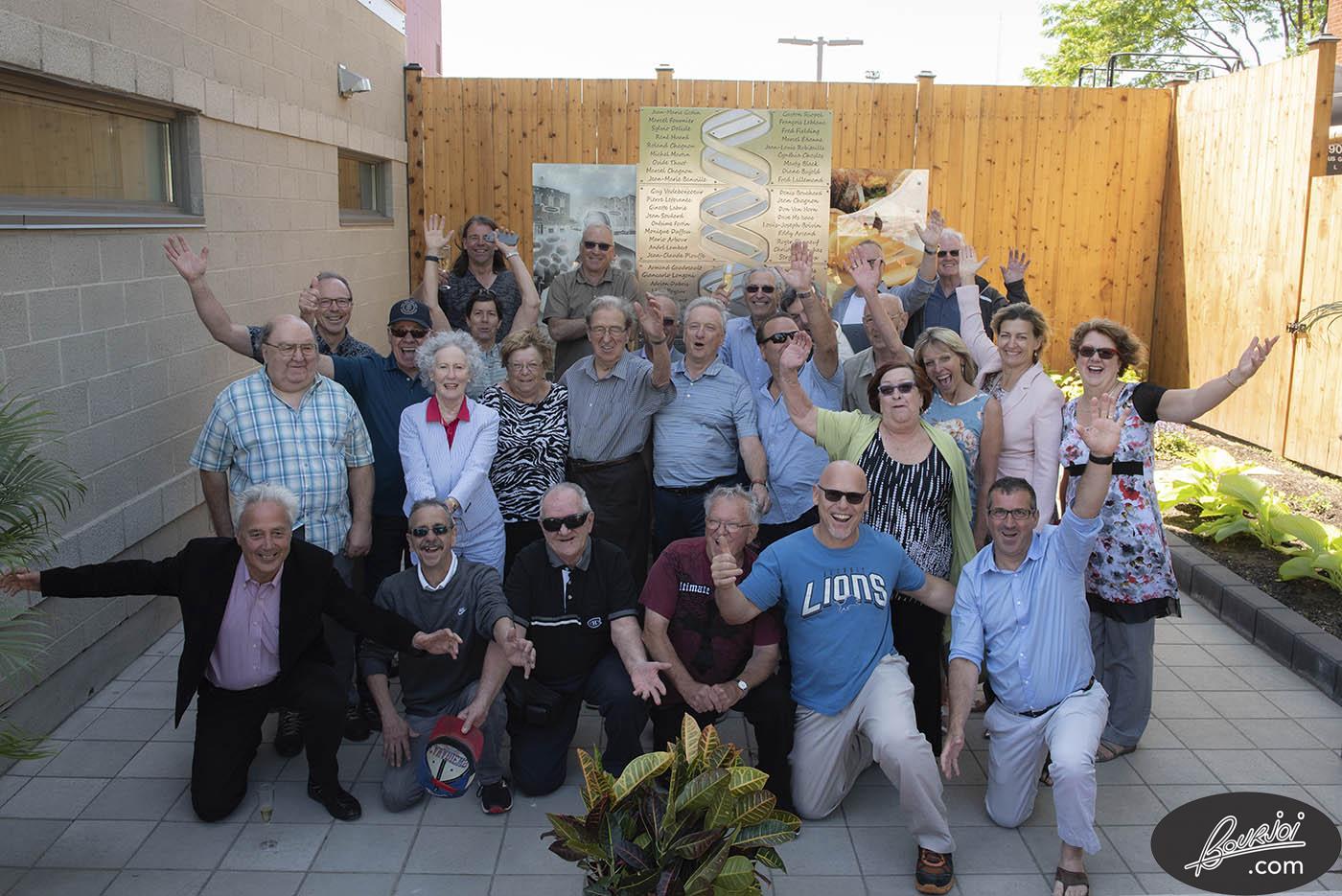
Lors de l’inauguration, l’émotion était palpable, particulièrement pour Madame Lise Chabot-Courchesne, doyenne avec 52 ans de service. Voir son nom gravé aux côtés de celui du fondateur, Fred Lallemand, soulignait avec force l’importance de la dimension humaine au sein de cette entreprise.
Ce projet a été réalisé en étroite collaboration avec M. Martin Cyr, directeur de l’usine, et M. Antoine Chagnon, jeune président de l’entreprise, sur une période de deux ans et demi. Cette œuvre, principalement constituée d’acier inoxydable – matériau emblématique de l’industrie alimentaire – symbolise la pérennité et la solidité des valeurs familiales, scientifiques et vitales qui animent l’usine depuis sa fondation.
Le module central du triptyque, incluant le socle, est de 100 pouces, pour symboliser les 100 ans de l’usine. J’ai utilisé les mesures impériales qui étaient en usage lors de sa fondation.
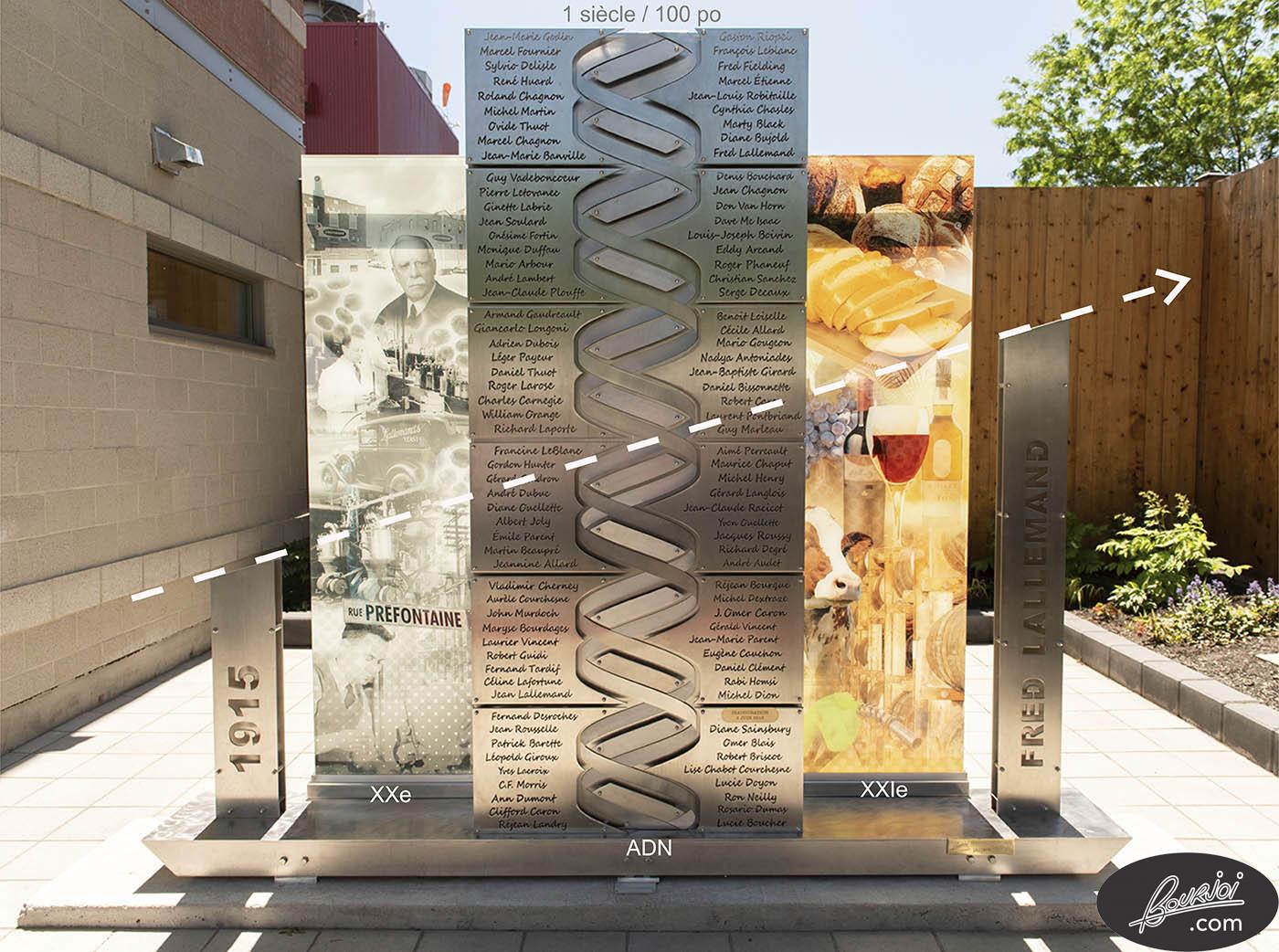
À gauche, l’extrémité supérieure de la balise de l’année de fondation est oblique, comme le bout de la balise plus haute à droite, qui porte le nom du fondateur de l’entreprise. De la balise de gauche à la balise de droite, on peut tracer une ligne virtuelle qui accompagne la progression de l’entreprise au cours de son siècle d’existence, qu’on peut finalement relier au nom de son fondateur, Fred Lallemand.
Ce dernier, venant d’Alsace, a intégré le Québec avec une facilité telle qu’il a adopté avec humour le surnom « Lallemand ». Son nom, désormais marque de l’entreprise, est lourd de sens et d’histoire.
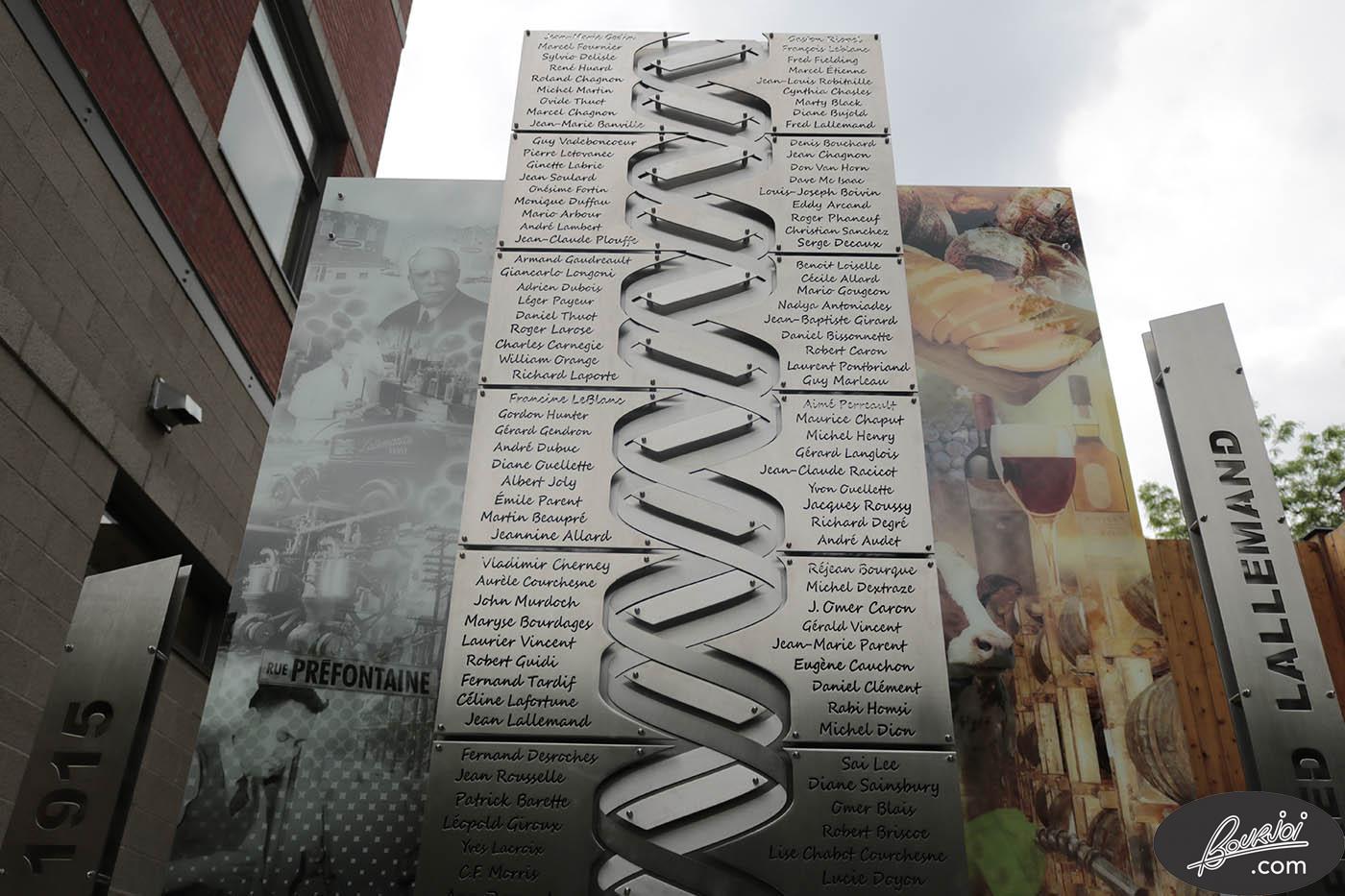
Les panneaux latéraux, quant à eux, évoquent l’évolution du temps et de la technologie, avec des photographies en noir et blanc rappelant le passé, et des illustrations en couleur symbolisant la complexité du XXIe siècle. L’élément central en forme de spirale d’ADN, tissé en acier inoxydable, représente à la fois la modernité scientifique et l’âme vitale de l’usine.
Enfin, 12 plaques gravées, représentant 12 mois et 12 heures, portent les noms des 105 travailleurs.
Ce travail a été pour moi un enchantement continu, une aventure artistique incomparable.
Bourjoi, artiste ouvrier d’Hochelaga
![]()
English version.
The artist, as a creator of culture, takes on the role of an indefatigable explorer of the human soul, constantly seeking meaning, awareness, and expression. Through their works, they create a universe where aesthetics transcend mere forms and delve into the depths of human experience. Without the symbolic language that artists offer through their work, humanity would be forced to improvise its own cultural codes, like an orchestra without a score, guided only by chance and improvisation.
On June 2, 2018, a milestone in my artistic journey, I had the honor of unveiling a monumental work in the presence of Mr. Pierre Lessard-Blais, mayor of the Mercier—Hochelaga-Maisonneuve borough, Mrs. Carole Poirier and Marjolaine Boutin-Sweet, respectively provincial and federal deputies, and Mr. Antoine Chagnon, president of Lallemand. This work, named Triptyque du Centenaire Lallemand 1915-2015, now holds a symbolic place at the end of the central path of the renovated Sarah-Maxwell Park, in the Hochelaga neighborhood. This ambitious project pays tribute to the workers of the Lallemand factory, located on Préfontaine Street for over a century.

Triptyque du centenaire Lallemand / Bourjoi 2018
Founded in 1915, this factory stands as a witness to our industrial and social history, a beacon of memory that has stood the test of time and transformations while remaining true to its roots.
Located near my studio, this factory has evolved by adapting to contemporary realities. It has been renovated and expanded many times, all while preserving a historical continuity that embodies the social and economic changes of each new era.
In his book The Aestheticization of the World: Living in the Age of Artistic Capitalism, Gilles Lipovetsky explores how certain modern companies have engaged in aesthetic production, merging art and design to enhance the human experience and inject beauty into a world often dominated by economic rationality.
The Lallemand factory fits perfectly within this trend. In 2015, to celebrate its centenary, it opened its doors to the public, revealing behind the scenes of its production of food-grade yeast, primarily intended for the baking industry.
As an artist from the Hochelaga neighborhood, this public commission allowed me to challenge the saying that « no one is a prophet in their own land. » Despite the prejudices often associated with Hochelaga, the Lallemand factory, firmly rooted in this neighborhood, entrusted me with the project without demanding prior details about the nature of the work I would propose.
This reflects not only their deep attachment to local history but also their respect for the surrounding community, which is truly the driving force behind the factory.
Creating a monumental public sculpture is a unique challenge for any artist. It is not merely an exercise in creation but a complex process involving aesthetic, technical, and symbolic considerations. The work is meant to withstand the test of time, to endure the judgment of future generations, and to embody a dialogue between the artist and the community. Such a project requires the artist to step out of their personal universe and embrace that of the collective while being attuned to the multiple layers of meaning that are interwoven.
For this project, I sought to merge art, science, and history, to conceive a work that resonates in the present while paying homage to the past. I was highly receptive to the influences of the place and the people, thus translating, with sensitivity, the spirit of the factory and its workers while evoking past generations.
The central concept of the work came to me when I realized that, despite its international expansion, the Lallemand company remained deeply rooted in its Quebec values. This fidelity to its family roots inspired me to symbolically link the managing family to the larger family of workers who have contributed to the factory’s reputation. Thus, the idea of engraving the names of 100 employees, each representing a year of the factory’s existence, naturally took shape.
However, the management wanted to go further, choosing instead to inscribe the names of all workers who had served more than 25 years with the company, thus demonstrating genuine recognition of their contribution.
About 3,000 years ago, writing was invented to count livestock. Over time, this tallying became storytelling, and through writing, stories became histories. We thus learned to name the world and narrate our lives. Yet no word carries as much meaning, history, and weight as a proper name, the name of a person encapsulating a life, a heritage, and a human experience rich in significance.
For this work, there could be no greater source of inspiration than the inscription of 105 proper names, symbolizing 105 years of existence. This list represents a tribute to the workers of Lallemand, a constellation of names cut into steel, representing not just individuals but an entire community.

Jubilaires, inauguration 2 juin 2018
At the inauguration, the emotion was palpable, particularly for Mrs. Lise Chabot-Courchesne, the longest-serving employee with 52 years of service. Seeing her name engraved alongside that of the founder, Fred Lallemand, powerfully underscored the importance of the human dimension within this company.
This project was realized in close collaboration with Mr. Martin Cyr, the factory director, and Mr. Antoine Chagnon, the president of the company, over a period of two and a half years.
This arwork, primarily composed of stainless steel – the emblematic material of the food industry – symbolizes the longevity and strength of the family, scientific, and vital values that have driven the factory since its founding.

Triptyque Lallemand, croissance 1915-2015
The central module of the triptych, including the base, measures 100 inches, symbolizing the factory’s 100 years since its founding. I used the imperial measurements that were in use when it was founded. On the left, the top of the marker for the founding year is slanted, as is the top of the higher marker on the right, which bears the name of the company’s founder.
From the left marker to the right marker, a virtual line can be traced that accompanies the company’s progress over its century of existence, ultimately connecting to the name of its founder, Fred Lallemand. The latter, from Alsace, integrated into Quebec so effortlessly that he humorously adopted the nickname « Allemand » (German). His name, now the company’s brand, is laden with meaning and history.

Triptyque du centenaire Lallemand en contre plongée
The side panels, meanwhile, evoke the passage of time and technology, with black and white photographs recalling the 20th century and colorful illustrations symbolizing the complexity of the 21st century. The central element, in the form of a DNA spiral woven in stainless steel, represents both scientific modernity and the factory’s vital soul. Finally, 12 engraved plaques, representing 12 months and 12 hours, bear the names of the 105 workers.
This work was for me a continuous enchantment, an incomparable artistic adventure.


